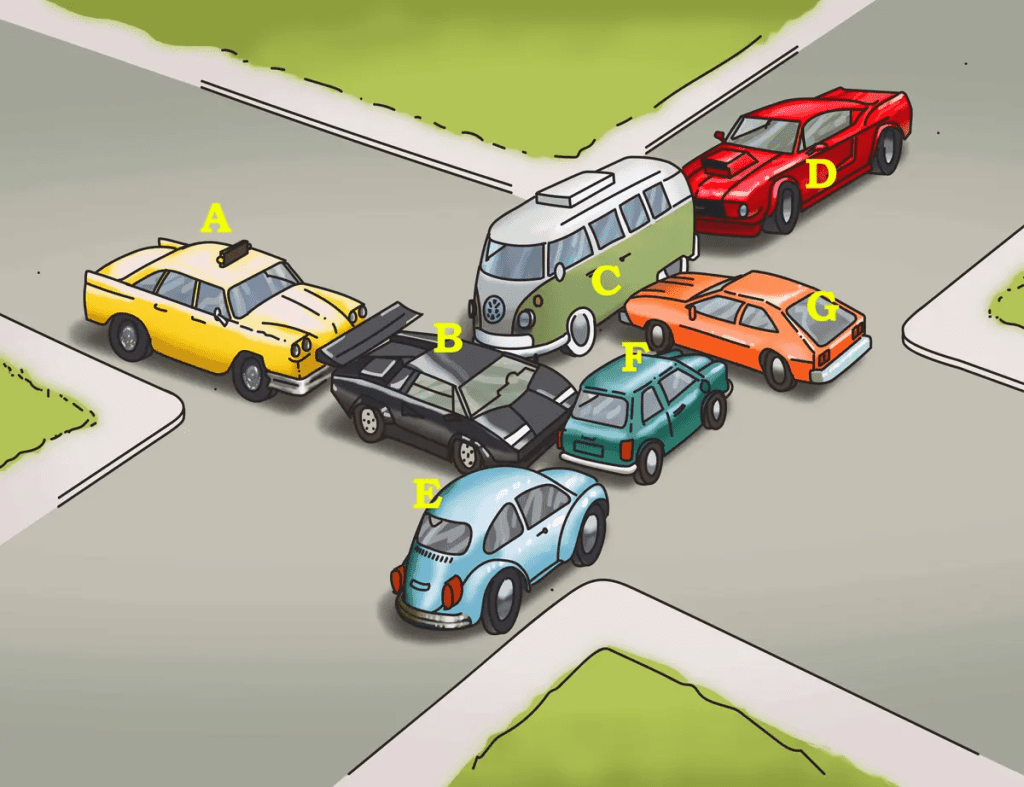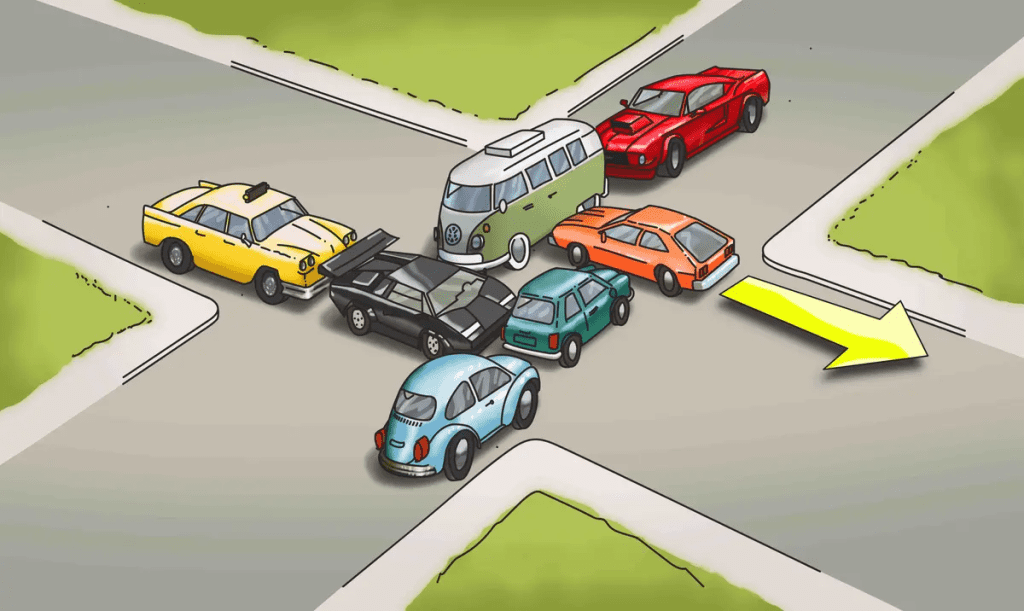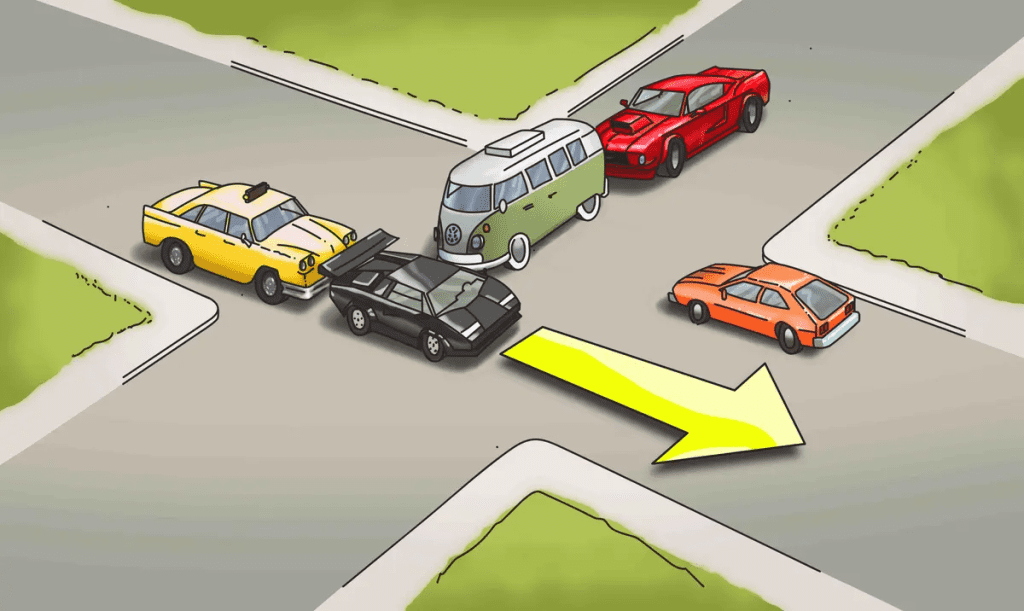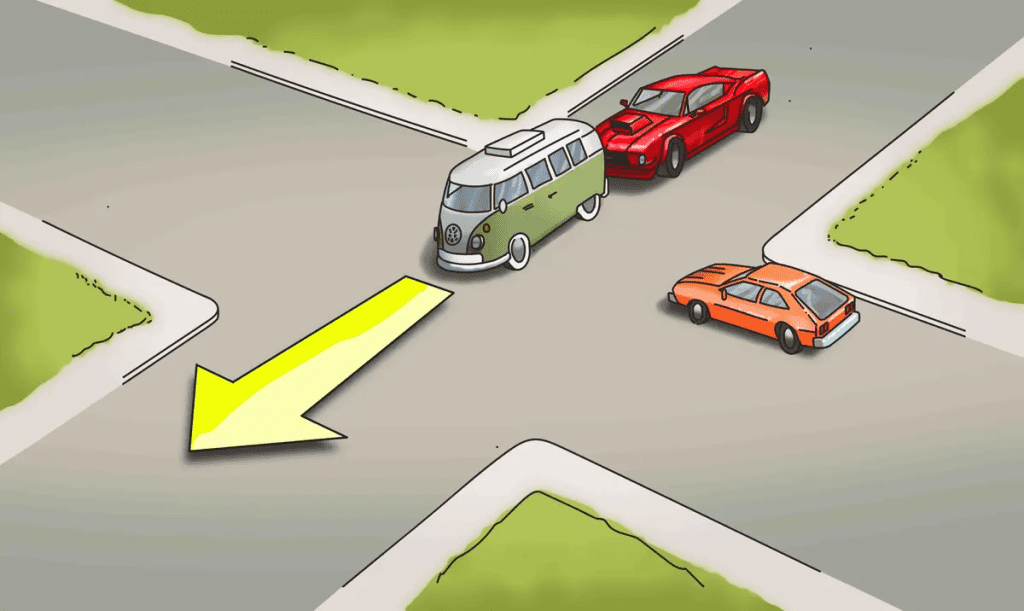Imagine you’re driving home from work, ready to relax after a long day, when you encounter a highly unusual traffic jam at an intersection. But this isn’t your typical traffic build-up; it’s a tight gridlock involving seven cars. No one can figure out how to move forward or back, and tempers are flaring. The drivers have been stuck for over an hour, and the puzzle remains: Which car has to move first to free the traffic jam?

Sounds tricky, right? But don’t worry—you’re about to step in as the hero and solve the gridlock with a bit of logic and strategic thinking. Ready to take on the challenge?
Understanding the Gridlock Brainteaser
At the heart of this scenario is a cluster of seven cars stuck in a tight intersection. Each driver entered the intersection at the same time, and now they find themselves trapped, with no clear path out. The challenge is figuring out which car needs to move first to unlock the gridlock and get traffic flowing again.
The drivers, identified by their car labels—A, B, C, D, E, F, and G—are all in a standoff, unsure who should make the first move. If you can crack this brainteaser, you’ll not only save the day but also help the frustrated motorists get back on their way.
So, how do you approach this seemingly impossible situation?
Analyzing the Traffic Jam: Where to Begin?
In any traffic jam like this, the key to solving it lies in figuring out the sequence of movements. You can’t just move any car; it has to be the right car that creates enough space for others to move as well.
The Gridlock Clue: Chain Reactions
Traffic jams like these operate on a chain reaction principle. If the right car moves first, it opens up a lane, which then allows another car to move, and so on. The goal is to figure out the “trigger” car—the one whose movement sets off this domino effect, gradually untangling the gridlock.
In this puzzle, that trigger car is Car G.

Why Car G Is the Key to the Puzzle
Car G, the orange Pinto, holds the solution to the entire traffic jam. By having Car G back up slightly, it creates the initial space needed for the other vehicles to start moving.
Here’s how it works:
- Car G moves first: By backing up or reversing, car G will create the first space for the lane behind, creating available space in a congested situation.
- Chain Reaction: Once Car G moves, another car—let’s say Car F—can then pull forward or turn, which frees up additional space for Car E. One by one, each car follows, leading to a cascading effect where the gridlock slowly unravels.

- The next: With each car moving in sequence, the traffic jam clears, and the final car (likely Car A or B) drives off, leaving the intersection fully open.

- Now that multiple lanes are freeing up, Cars D and C can begin moving forward, making more room for the final two cars.

The Importance of Strategic Thinking in Puzzles
So, why does this solution work? The key is recognizing that traffic jams are all about space management. When cars are gridlocked, no one can move unless another car creates the space for them. By starting with Car G, you’re essentially creating a gap in the traffic that allows others to move.
Breaking Down the Cars: A Closer Look at Each Vehicle’s Role
Let’s take a moment to analyze the role of each car in this gridlock scenario and why Car G is the obvious solution.
- Car A: Positioned near the front, Car A can’t move until other cars start clearing the path. It’s not the right starting point because it’s blocked by Cars B and F.
- Car B: Similarly to Car A, Car B is also blocked. Even though it’s positioned close to the center, it doesn’t have the necessary space to move first.
- Car C: Car C could potentially move, but only if Car E moves first. It’s part of the chain reaction but not the starting point.
- Car D: Car D is similarly positioned, unable to move without first creating space behind it. It also plays a role in the chain reaction.
- Car E: Positioned towards the back, Car E is blocked by Car F and needs those cars to clear before it can make its move.
- Car F: Car F is the second most important car in the puzzle. After Car G moves, Car F gains enough space to maneuver, allowing the traffic jam to ease further.
- Car G: Positioned perfectly to trigger the chain reaction, Car G has the space behind it to back up, opening up lanes for the other cars.
Conclusion: The Puzzle Solved
By now, it’s clear: the car that has to move first to solve the gridlock is Car G. Once it moves, the other cars can follow suit, and the entire traffic jam unravels. This brainteaser not only challenges your problem-solving skills but also serves as a reminder that sometimes, the solution is simpler than it appears—you just need to find the right starting point.
Next time you’re stuck in traffic (or in a complex problem), remember this brainteaser and consider where the chain reaction needs to begin. Whether it’s on the road or in life, solving problems often starts with a single, smart move.


